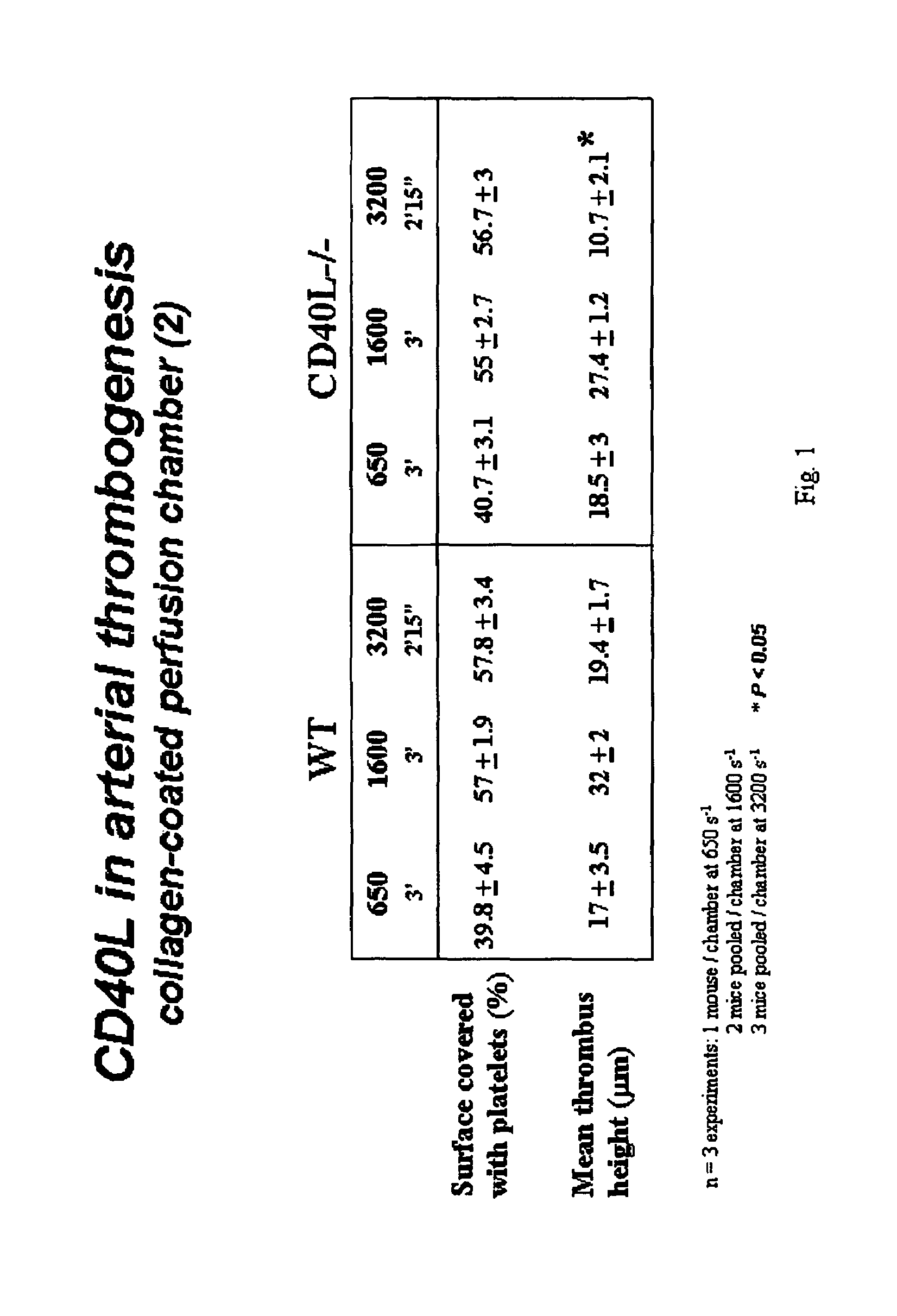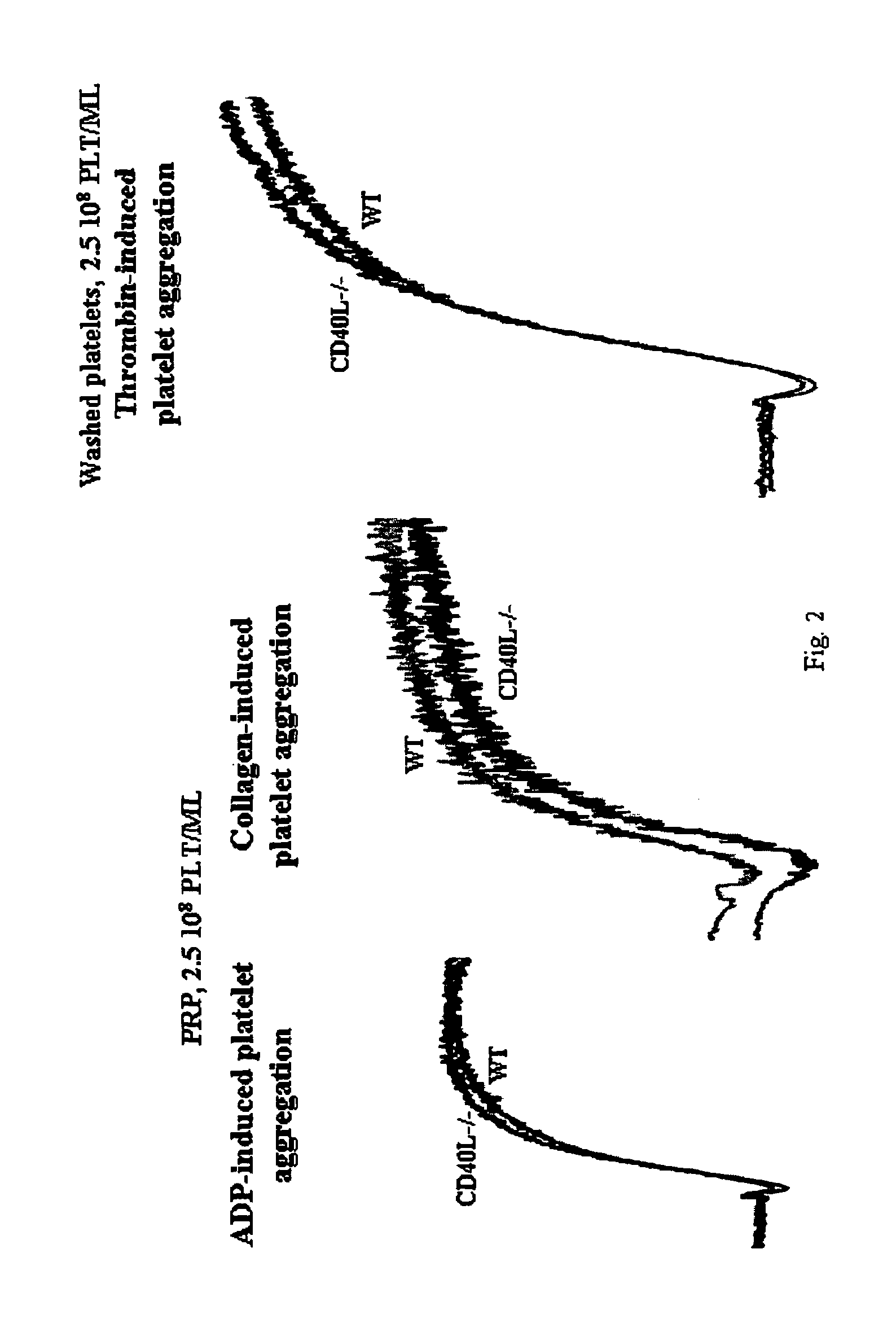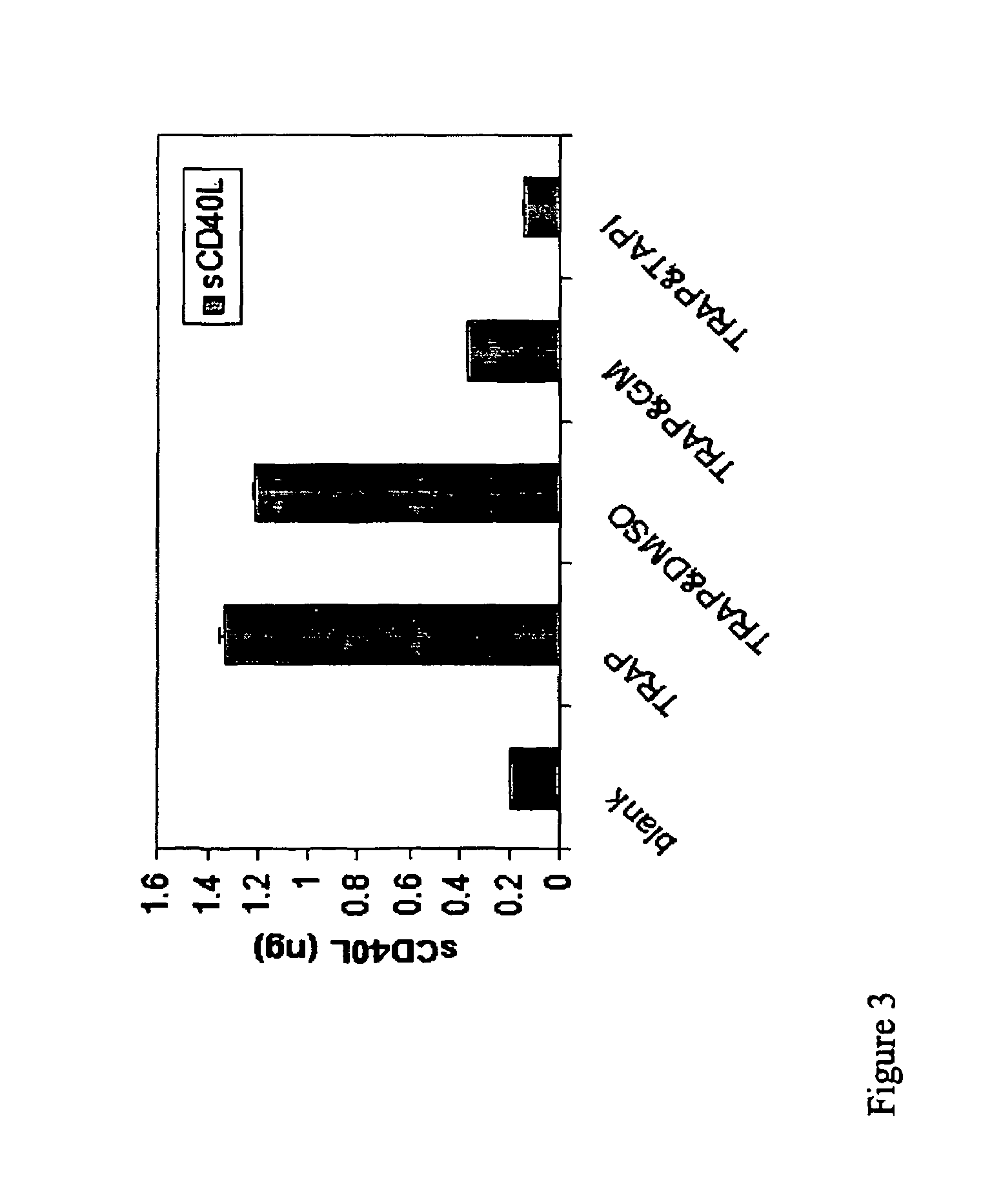Compounds and methods for the modulation of CD154
a technology of cd154 and compounds, applied in the direction of chemical treatment enzyme inactivation, peptides, drug compositions, etc., can solve the problems of complex development of safe and effective products and processes for regulating hemostatic function, unsatisfactory procedures, and complications, so as to reduce the activation of the cells involved, the effect of stabilizing the thrombotic process
- Summary
- Abstract
- Description
- Claims
- Application Information
AI Technical Summary
Benefits of technology
Problems solved by technology
Method used
Image
Examples
example 1
Release of sCD154 from Platelets Upon Aggregation
[0128]Platelet-rich plasma (PRP) was prepared from human donors by obtaining blood through a 19-gauge butterfly into PPACK anticoagulant (8.6 ml of 2.1 mM PPACK, Calbiochem, La Jolla, Calif.: final concentration 0.3 mM). Blood was aliquoted into 15 ml polypropylene tubes and centrifuged at 900 rpm for 20 minutes (160×g). The platelet rich plasma (PRP) was carefully removed and pooled in a new tube. Platelet counts were taken and recorded. Aliquots of PRP at 37° C. were then added to 1.5 ml microcentrifuge tubes containing various amounts of INTEGRILIN®. To initiate aggregation, 20 μM ADP or 5 μM TRAP6 was added and samples were rocked on a Nutator for 30 minutes at 37° C. The tubes were put on ice and immediately centrifuged at 15,000× g for 10 minutes at 4° C.
[0129]The platelet-poor plasma (PPP) supernatant was removed to new tubes and the levels of sCD154 in these samples were measured by ELISA. There was a time-dependent increase i...
example 2
Cloning and Expression of Human rsCD154
[0130]A cDNA of human sCD154 was prepared by reverse transcribing polyA RNA isolated from Jurkat cells using a forward primer (CGAATTCCTCTTCCATGGAAAACAGCTTTGAAATG; SEQ ID NO: 1) and a reverse primer (GACTCTTCGAAGCTAGGATCCTAGGGTTA; SEQ ID NO: 2) for CD154. cDNA expressing human sCD154 (108 a.a-261 a.a.) was cloned in pDUAL vector (Stratagene) at Eam11041 restriction site. The clone was sequenced and confirmed to have the desired sequence. The cDNA has an artificially inserted methionine start site and expressed as an 18-kDa protein under a CMV promoter. cDNAs of sCD154 are transformed into bacterial strain BL23(DE3)-RIL to obtain maximum expression. Conditions for growth and optimal expression were standardized. rsCD154 was purified by lysing the bacterial pellet by sonication subjecting the lysate to two rounds of ion-exchange chromatography and one round of gel filtration. Sequencing confirmed that the purified protein was indeed sCD154.
example 3
Biological Function of Bacterially Expressed Human rsCD154
[0131]Inflammation in the present invention study was measured by the upregulation of tissue factor on cultured endothelial cells. Endothelial cells were the cells selected for study as this is the most abundant cell exposed to blood and is known to express CD154, the ligand for CD154 (Yellin, M J, J. Exp Med, 182: 1857(1995)). Tissue factor was selected as the marker for inflammation because this protein is known to be up-regulated in response to CD154 (Slupsky, J R, Thromb. Haemost., 80: 1008 (1998)), to localize with all developmental stages of atherosclerotic lesion development (Wilcox, J N, Proc. Nat. Acad. Sci. (USA), 86: 2839 (1989); Annex, B H, Circulation, 91: 619 (1995)) and to initiate thrombosis.
[0132]Human umbilical vein endothelial cells (HUVECS) purchased from Clonetics Inc. were cultured with M199 containing 20% FBS, 50 μg / ml endothelial mitogen (Biomedical technologies Inc.) 2 mM glutamine, 1 mM Sodium Pyruva...
PUM
| Property | Measurement | Unit |
|---|---|---|
| incubation time | aaaaa | aaaaa |
| weight | aaaaa | aaaaa |
| weight | aaaaa | aaaaa |
Abstract
Description
Claims
Application Information
 Login to View More
Login to View More - R&D
- Intellectual Property
- Life Sciences
- Materials
- Tech Scout
- Unparalleled Data Quality
- Higher Quality Content
- 60% Fewer Hallucinations
Browse by: Latest US Patents, China's latest patents, Technical Efficacy Thesaurus, Application Domain, Technology Topic, Popular Technical Reports.
© 2025 PatSnap. All rights reserved.Legal|Privacy policy|Modern Slavery Act Transparency Statement|Sitemap|About US| Contact US: help@patsnap.com



